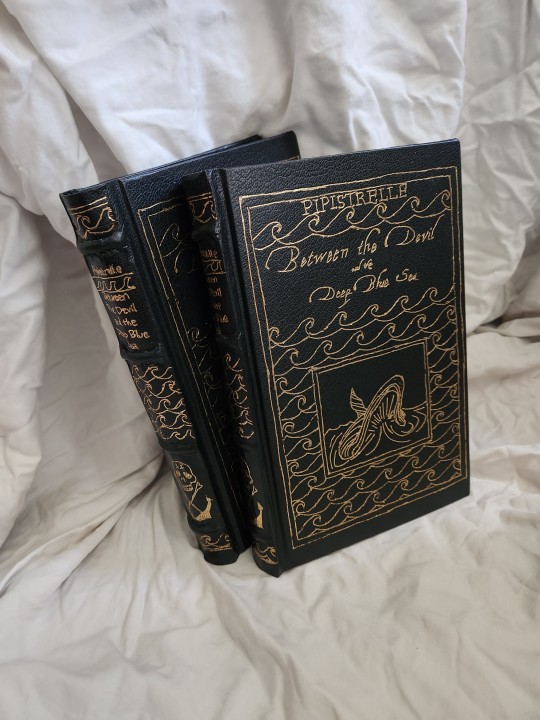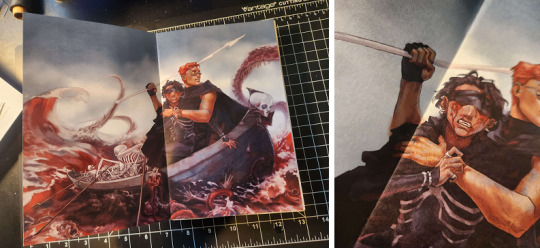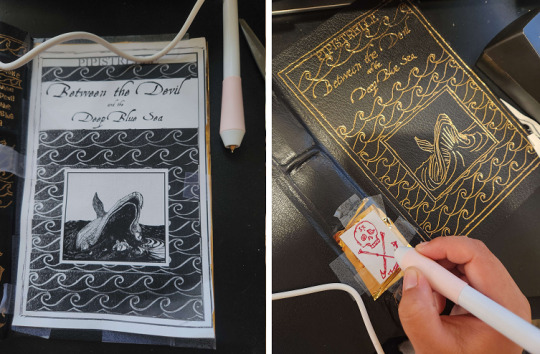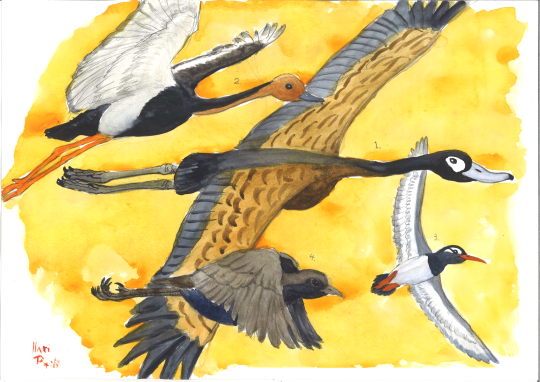#neornithes
Explore tagged Tumblr posts
Text
Lumbrerornis rougieri Bertelli et al., 2024 (new genus and species)

(Tibiotarsus [fused shin and ankle bones] of Lumbrerornis rougieri [scale bar = 10 mm], from Bertelli et al., 2024)
Meaning of name: Lumbrerornis = Lumbrera Formation bird [in Greek]; rougieri = for Guillermo Rougier [Argentinian paleontologist and discoverer of the original fossil]
Age: Eocene (Lutetian)
Where found: Lumbrera Formation, Salta, Argentina
How much is known: A partial left hindlimb and an indeterminate bone fragment.
Notes: Lumbrerornis is the first bird to be named from the Lumbrera Formation. It is unclear exactly what type of bird it was, but it has some similarities to two groups of long-legged Eocene birds from the Northern Hemisphere, the European palaeotidids and the North American geranoidids, both of which appear to have been closely related to ostriches.
Reference: Bertelli, S., N.P. Giannini, D.A. García-López, V. Deraco, J. Babot, C. del Papa, M.A. Armella, C. Herrera, and G. Mayr. 2024. The first Eocene bird from Northwestern Argentina. Publicación Electrónica de la Asociación Paleontológica Argentina 24: 78–89. doi: 10.5710/PEAPA.31.05.2024.511
82 notes
·
View notes
Note
Dino question: how come birds used to have teeth and now they don’t? Was there some evolutionary bottleneck where only dinosaurs with beaks evolved and all the toothed ones died off? And what’s the benefit of beaks over teeth?
there was an evolutionary bottleneck! it was the end-cretaceous extinction
for some reason, birds with beaks survived, and those with teeth did not. that's literally the dividing line. Leading hypotheses center around the ability of the beak to access hard to access food, such as seed and other things in hard casings, that would have been a source of food in the impact winter - plants survive such disasters with spores and the like, so if you could eat such hard casings, you had food that no one else had.
plus, most of the toothed birds lived in trees, which would have been burned to a crisp in the worldwide wildfires. Neornithines were mostly associated with aquatic habitats at this point, which had better hiding places
so, yeah. by sheer coincidence, the only dinosaurs that could survive one of the most dramatic bottleneck events in earth's history were just the ones that didn't have teeth.
169 notes
·
View notes
Note
Ok first off your dilophosaurus art is peak
Second do you like Mesozoic birds?
thank you! I’m glad you liked it!
and yeah I’d say I like Mesozoic birds
I find the gradual transition (in some groups) from teeth to keratinous beaks interesting
I think I’d have to do a bit more research to say much more than that about them though
oh yeah and I do enjoy the seabird-like ones (hesperornis, ichthyornis, parahesperornis)
5 notes
·
View notes
Text

An artist’s reconstruction of the world’s oldest modern bird, Asteriornis maastrichtensis, in its original environment.
Asteriornis is one of the oldest-known birds irrefutably belonging to the group Neornithes, which encompasses all modern birds. It possesses characteristics of both galliformes (chicken-like birds) and anseriformes (duck-like birds), indicating its position as a close relative of the last common ancestor for both groups…
Illustration by Phillip Krzeminski
869 notes
·
View notes
Text

Direct evidence of frugivory in the Mesozoic bird Longipteryx contradicts morphological proxies for diet
Jingmai O’Connor, Alexander Clark, Fabiany Herrera, Xiaoting Zheng, Han Hu, Zhonghe Zhou
Summary
Diet is one of the most important aspects of an animal’s ecology, as it reflects direct interactions with other organisms and shapes morphology, behavior, and other life history traits. Modern birds (Neornithes) have a highly efficient and phenotypically plastic digestive system, allowing them to utilize diverse trophic resources, and digestive function has been put forth as a factor in the selectivity of the end-Cretaceous mass extinction, in which only neornithine dinosaurs survived. Although diet is directly documented in several early-diverging avian lineages, only a single specimen preserves evidence of diet in , the dominant group of terrestrial Cretaceous birds. Morphology-based predictions suggest enantiornithines were faunivores, although the absence of evidence contrasts with the high preservation potential and relatively longer gut-retention times of these diets. Longipteryx is an unusual Early Cretaceous enantiornithine with an elongate rostrum; distally restricted dentition; large, recurved, and crenulated teeth; and tooth enamel much thicker than other paravians. Statistical analysis of rostral length, body size, and tooth morphology predicts Longipteryx was primarily insectivorous. Contrasting with these results, two new specimens of Longipteryx preserve gymnosperm seeds within the abdominal cavity interpreted as ingesta. Like Jeholornis, their unmacerated preservation and the absence of gastroliths indicate frugivory. As in Neornithes, complex diets driven by the elevated energetic demands imposed by flight, secondary rostral functions, and phylogenetic influence impede the use of morphological proxies to predict diet in early-diverging avian lineages.
Read the paper here:
Direct evidence of frugivory in the Mesozoic bird Longipteryx contradicts morphological proxies for diet: Current Biology (cell.com)
216 notes
·
View notes
Text
Five Fifth fics under 5k
I've seen lots of people recommending fics with various themes, and though I'd share a few shorter Fifth-centric fics I've really enjoyed:
Under Your Skin by pipistrelle (@neornithes)
"You're not yourself."
"No, you're quite right," Abigail said, and smiled. For just a split second the candlelight gleamed unnervingly on that smile, showing teeth too sharp and somehow too crowded in her jaw; then a pair of chattering couples passed in front of the candelabra on the sideboard, casting cheerful shadows, and in their wake the distortion was gone.
This is the polite but feral Fifth fic for me.
I'm resisting the urge to write a long and loving description of every perfect detail, but suffice it to say that this is a delightful and troubling snapshot of what "The House of the Fifth always skinned itself over with such airs of civilisation, with so many manners and niceties, but they were spirit-talkers and speakers to the dead. And the dead were savage." might mean.
Selected Excerpts by @liesmyth
I'm not going to do a better job than the original blurb: A reading from “Why do we pray to Lyctors? The role of Necrosaints in devotional practice” published by Abigail Pent, PhD, in the Journal of Early History, Vol. 876, No. 1, with oral commentary by several of the Emperor's Saints. Coffee to follow.
Heavily footnoted observations on the development of saintly patronages and the purpose of prayer, interspersed with snarky observations from the objects of those devotions.
the sea and its waters by @darlingofdots
Again, I can't do it better justice than the original summary: 'au where Gideon wore her real sword to breakfast on like Day 2 of Canaan House because fuck Harrow amiright? and from across the dining hall Abigail Pent was like, “oh my god that sword is possessed. That sword is VERY possessed.” *walking over* “Did you know that your sword is possessed by literally THE angriest - I’m gonna talk to her. Is anyone else going to - I’m not waiting for an answer, I’m talking to this ghost.”'
“It’s Two Thousand Years Old, It's Essentially Public Property”. by KaiserJo
Lyctor!Abigail and Mercy clash on the Mithraeum over Abigail's research.
So now Mercy rushed through the corridors of the Mithraeum like a tsunami, based on a tip off from Augustine that Pent had discovered some “Rather boring letters”, but that it would be “best to stop her before she attempts to draw academic conclusions.'
Brew the Dead by terribletressym
“The coffee,” Pent repeats, and there's a slight hitch to her voice as she shifts, jarring her broken arm, “is haunted.”
The coffee shop AU, but things take a rather alarming turn. Another little gem of humorous yet horrifying engagement with possession and its mechanics.
---
OK, there may be more than five recommendations here...
Have some fics that are not Fifth, but still under 5k:
Near–Far Problem by @heliocharis
This one isn't Fifth. But it does involve my second favourite ship involving a formidable woman with too many degrees, the wildly underrated rare pair that is We Suffer/Juno Zeta:
There is something nearly voyeuristic about it, coming to recognise the voice of someone who most likely doesn’t know you exist.
If she were to examine it any more, she might come to the conclusion that this is because the voice has something quite attractive about it. This is a ridiculous thing to think.
Push Your Luck (Revised) by anonymous
Samael and Anastasia backstory, set amidst the dour religion and robust mining unions of the not-quite-yet-Ninth-House, told in a style that reminds me of Pratchett's Watch novels.
Sam didn’t feel equal to raising that issue with the Holy Councils, but he asked his union rep to negotiate his dowry. Drearburh was getting a whole missile defense system, the least it could do was kick his Ma some cash.
Locus Desperatus by sigaloenta
You know how in HTN it's suggested that Harrow and Ortus have been arguing for a decade about whether Nonius fought a Lyctor? Here's a 13 year old Harrow debating paleography with Ortus. This is full of delicious details like the Ninth's library classification system, bindings inlaid with rare and precious wood, modern academic register as an almost indecipherable ancient way of writing, and lovingly rendered manuscript lacunae.
But Ortus stood his ground. "Is it not written, my lady, that palaeography is the offhand—the lesser sister of the dyad whose dance is the critic's art? The scholar must be prepared to write 'philosoraptor' if the sense requires it, where the manuscripts have the monosyllabic interjection 'o'."
The Lillian Sitta Memorial Lecture Hall by the_ninth_house_glared
Again, I'm going to let the original summary speak for itself: Necromantic duels aren’t common on the Sixth, unless there’s an accusation of plagiarism that doesn’t get resolved through Oversight. Then it’s on, in the Lillian Sitta Memorial Lecture Hall, with everyone jockeying for position to see two hoary adepts try to maim each other with necromancy they haven’t used outside a lab in fifteen years.
#the locked tomb#tlt#abigail pent#magnus quinn#mercymorn the first#samael novenary#anastasia the first#palamedes sextus#camilla hect#juno zeta#we suffer and we suffer#My taste in short fic essentially boils down to 'the horrors of academia' and 'make the Fifth weirder'
51 notes
·
View notes
Text







Between the Devil and the Deep Blue Sea, by pipstrelle/ @neornithes
Endpaper art: Grody Maritime Necromancy by @iris-of-the-lambs
Being the journal of Reverend Daughter Harrowhark Nonagesimus, chronicling the journey of the Emperor's warship Cenotaph on its hunt to slay an immortal Resurrection Beast.
or: THE MOBY DICK AU!! This fic has been an all time favorite of mine for so long, I am so excited to finally have been able to bind it!
Title font: AquilineTwo
Body font: Garamond
333 pages
Faux leather cover (Skivertex) with hand-embossed gold foil
Progress pictures/process under the cut!
The concept behind this fanbind is based on this specific special edition of Moby Dick by the Easton Press:

I did a TON of things for the first time on this bind much of it largely by winging it.
making the hubs (bumps on the spine)

first time rounding and backing (ft secret other binding project I can't show yet) + printing it off in the library

installing the FANTASTIC endpaper art (SOOO nervewracking), plus a close up shot of how I got the center crease to land JUST to the left of Harrow's face, which I'm super proud of.

foiling for days!! using the Easton Press edition as a guide, I mocked up a cover in MS Paint, then printed it off so I could foil it down. my hand was cramping but it was SO worth it!

and finally some unboxing pictures from the lovely writer!! so happy it arrived home safe and sound

#the locked tomb#fanbind#fanbinding#bookbinding#trb.txt#raxheim binds#THIS WAS SO FUN TO MAKE#excited to finaly post abt it!!!
271 notes
·
View notes
Text
Fossil Novembirb: Day 1 - The Chosen Ones

All the dinosaurs died out at the end of the Cretaceous during the K/Pg extinction event 66 million years ago. All of them? No! One group of dinosaurs managed to survive the event and are still around today. Neornithes, or Crown birds. They evolved during the end of the Cretaceous period, and by coincidence, had traits tohelp them survive the cataclysm. Here's a few of these early feathered friends.
Teviornis, a large wading Presbyornithid (flamingo-duck) from Mongolia
"Styginetta", a smaller Presbyornithid (flamingo duck) known from Western North America
Vegavis, a strange, small diving seabird related to ducks and geese, known from Antarctica
Asteriornis, sometimes called the "wonder-chicken", a tiny long legged shorebird related to the common ancestors of ducks and chickens, known from Belgium
#Fossil Novembirb#Novembird#Dinovember#birblr#palaeoblr#birds#dinosaurs#Cenozoic Birds#teviornis#styginetta#vegavis#asteriornis
207 notes
·
View notes
Text
Why defining "birds" precisely is hard
(A reply to @lyxthen-reblogs that got too long and is now its own post)
A long time ago (in the 1700s), we didn't really have any idea of how birds came about - evolutionary theory itself would have to wait another century! And, we didn't have knowledge of extinct species either, or even of the fact extinction was a thing. Carl Linnaeus, when setting up the first taxonomical classification of life, grouped modern birds in the class Aves. Mammals were grouped in Mammalia, reptiles, amphibians and cartilaginous fish in Amphibia, bony fish in Pisces, arthropods in Insecta and all other animals in Vermes.
This first classification was pretty crude, and, around 1820, scientists like de Blainville and Latreille began distinguishing reptiles from "batrachians" as separate classes. De Blainville, pointing out similarities between reptiles and birds, labelled the former as "ornithoid" (bird-like) while amphibians were "ichthyoid" (fish-like). In 1825, Latreille fully separated amphibians (Batrachia, later Amphibia) from reptiles (Reptilia).
The first major turning point for taxonomy came in the next decades, as many fossils of now-extinct creatures were unearthed. In 1842, Richard Owen coined the term Dinosauria, then uniting the recently discovered Megalosaurus, Hylaeosaurus and Iguanodon.
But it wouldn't be until the 1860s that Darwinian evolution would highlight the flaws in the earlier understanding of separate classes. In 1863, Thomas Henry Huxley would suggest uniting birds and reptiles, creating the class Sauropsida the next year. Huxley was the first to suggest birds evolved from dinosaurs, comparing the recently-discovered Archaeopteryx (1861) with Compsognathus. As cladistics didn't exist back then, no attempt at precisely extending the definition of "bird" to extinct forms was made, even though Archaeopteryx was usually called "the first bird" (Urvogel).
Unfortunately, this hypothesis would be shelved for a whole century, leading to little progress happening in terms of understanding bird evolution. It wouldn't be until the 1960s and the Dinosaur Renaissance that the links between birds and dinosaurs would be rediscovered, with birdlike theropods like Deinonychus being unearthed. This would really accelerate with the discovery of extremely well-preserved feathered dinosaurs, starting with Sinosauropteryx in 1996.
With numerous fossils showing steps of a gradual dinosaur-to-bird transition, the question of defining the "first bird" came to be asked again. To try to answer this, Jacques Gauthier coined the clade Avialae in 1986 as all dinosaurs more closely related to modern birds than to deinonychosaurs. This included Archaeopteryx, which other authors used for an alternate definition of Avialae: "the smallest clade containing Archaeopteryx and modern birds".
Still, the conflict didn't end there. Fundamentally, there were many ways to extend Aves (as defined from modern birds) to past ancestors, and, in 2001, Gauthier and de Quieroz identified four. Avemetatarsalia, defined as any archosaur closer to birds than to crocodilians (including all dinosaurs and pterosaurs!). Avifilopluma, defined as any archosaur possessing feathers homologous to bird ones. Avialae, redefined as any dinosaur able to fly (and their flightless descendants). And finally, Aves or Neornithes, the crown-group (the last common ancestor of modern birds, and its descendants).
The issues were many. Avifilopluma became mostly useless as a definition as ornithischians, then pterosaurs, were found to possess filaments homologous with bird feathers. Virtually every bird-line archosaur (with the possible exception of the little-known aphanosaurs) could likely fit in this clade, and its content was too uncertain to be reliably used.
Meanwhile, Avialae had (and continues to have) three distinct definitions. Notably, the ability for flight itself proved to be a poor definition, as bird relatives (Maniraptora, including Deinonychus, Velociraptor, Oviraptor, and many other bird-like theropods) likely evolved flight several times, from the four-winged Microraptor to the bat-winged Yi qi. Truly, most maniraptorans were extremely bird-like: wings had evolved much earlier than flight itself, with even dinosaurs like Velociraptor sporting fully feathered wings despite being unable to fly.
So, what was left? The crown group Neornithes, a vaguely defined Avialae, a more extensive Maniraptora, the stem group Avemetatarsalia, and lots of confusion. Usually, Aves is taken today as referring to either Neornithes or Avialae, although Avifilopluma/Avimetatarsalia are also in use (for instance, the Sinosauropteryx discoverers used Avifilopluma, and considered it a bird).
But none of these definitions are inherently better or worse. They are all different ways of extending a definition made for modern creatures to have it apply to past ones.
51 notes
·
View notes
Text
Enantiornithean Earth: Dep la

#speculative evolution#speculative biology#spec evo#speculative zoology#enantiornithean#enantiornithes
10 notes
·
View notes
Text
aka the four groups of modern dinos (birds) that were around in the Cretaceous, and so must have survived through the end-Cretaceous extinction
we're ignoring Qinornis bc even if they aren't a neornithine (crown bird) they definitely didn't last v long
#dinosaurs#birds#cenozoic birds#neornithes#end-cretaceous extinction#paleontology#palaeoblr#birblr#poll
84 notes
·
View notes
Text
i've been tagged by @nancywheeeler to participate in a wip game! this is excellent timing as i've really been struggling with finding the motivation to write recently but i've got a few things i'd like to put out there soon (one ideally within the next week or so!) so, without further ado:
RULES: make a new post with the names of all the files in your WIP folder, regardless of how non-descriptive or ridiculous. let people send you an ask with the title that most intrigues them, and then post a little snippet or tell them something about it! then tag as many people as you have WIPs.
bad people don't live in our house
lyctoral reversal
rotted leaves and lemon rind
left unattended, what do we do?
WAGAB
things that we were working on
and you may find yourself behind the wheel of a large automobile
der rosenkavalier
skeleton warriors
let my fingers but see
that's not everything in there (not by a long shot tbh if you include the things i've put into long term storage) but ten titles should be more than enough for our purposes here i think!
in fact ten is maybe too many. uhh. okay no-pressure tagging @liesmyth, @friendamedes, @rnanqo, @arithmonym, @aberfaeth, @recentlylocal, @neornithes, @darlingofdots, @happi-tree, and anyone else who's interested!
5 notes
·
View notes
Text
That's a harpist, silly! Carnists are a clade of giant theropod dinosaurs closer related to Allosaurus fragilis than to Neornithes.
i like how at five guys they're like oh you want one burger okay "ONE LITTLE BURGER" and then the guy cooking the burger is like "ONE LITTLE BURGER FOR BABY FAGGOTS THAT CAN ONLY HANDLE ONE PATTY COMING UP" and then if you can't finish it they make you wear a maid costume and handcuff you to the sink in the men's bathroom
28K notes
·
View notes
Text
Neoaves and neornithes meaning extremely different things but etymologically being 'new birds' (latin) and 'new birds' (greek) is constantly tripping me up as someone who until about a week ago knew basically nothing about bird taxonomy but decided to do a literature review about the phylogenetic position of this one bird order for 30% of my grade for a topic for some reason.
1 note
·
View note
Text

Le devastazioni dell'ignoranza.
La mia, d'ignoranza.
Plurima ignoranza, avrete notato il plurale del soggetto, nell'incipit.
Intanto credevo fosse un picchio.
Nè avrebbe giovato la tabella ornitologica.
Perché scrivere Neornithes Neognathae Bucerotiformes non mi avrebbe aiutato a capire che era una upupa.
Una upupa, non un picchio.
Così io credevo che Montale avesse cantato un picchio, non una upupa.
Ed allora avrei detto che Montale aveva per antecedente Boccaccio, nel cantare picchi.
Sì, quel passo lì in cui Giovanni scrive:
"Un picchio e poi un grande aghirone. Pelican si fere / va 'l picchio a scosse e l'aghiron volteggia".
Oltretutto, non sapevo neanche che aghirone è la forma arcaica di airone.
Eccomunque, se Eugenio avesse fronteggiato un airone, almeno lì mi sarei avveduto della differenza.
Fronteggiato dove?
Nella praeclara fotografia di Ugo Mulas.
E lì, non fossi stato ignorante, mi sarei risparmiato un timore.
Il timore che l'upupa beccasse Eugenio.
Me meschino, non sapevo fosse imbalsamata.
Ma non avrebbe beccato lo stesso, Eugenio.
Erano colleghi, loro.
Perché l'upupa ed Eugenio avevano una cosa in comune:
entrambi cantavano.
L'upupa con il trisillabico hup hup hup.
Eugenio cantava da baritono, lagnandosi che non fosse basso.
Oppure potremmo dire che ogni poeta canta in versi, e saremmo già a posto così.
Queste sono cose che Ugo Mulas sapeva.
E s'era documentato, Ugo.
Ricognizioni a Monterosso, prima di fotografare Eugenio.
Per assorbire l'humus culturale, questo il professato intento.
Per me queste sono stupidaggini, perché Ugo avrebbe fotografato Eugenio bene anche senza andare a Monterosso.
Del resto Ugo aveva conosciuto Eugenio anche a Milano.
Era un presenzialista, Ugo.
Se è per quello, anche il mio attuale dirimpettaio condominiale andò a cena con Eugenio.
Io no.
L'avessi fatto, mi sarei risparmiato la figuraccia del picchio.
Epperò, Eugenio aveva calunniato un altro Ugo (Foscolo, non Mulas) a proposito dell'upupa.
Sì, in Ossi di Seppia Eugenio dice che quell'altro Ugo là non aveva capito niente, d'upupe.
L'Ugo fotografo, invece, ha capito tanto d'Eugenio e d'upupe.
Perché Eugenio è un tibetano bonzo, lì nella fotografia con l'upupa.
Profilo imperturbabile, promana antichità.
Ma non poi così atarattico:
pronti al movimento suoi occhi sono, nella rocciosa scultura che il suo volto esprime.
Pronti al movimento, ma anche allo scavo.
Perché volare abbisogna sguardo interiore, prima.
Sol così Eugenio consegnerà lo sguardo all' "aligero folletto".
All rights reserved
Claudio Trezzani
0 notes
Text
Te leemos las noticias aquí Fósil de Navaornis hestiae, de 80 millones de años de antigüedad. / S. Abramowicz, Instituto de Dinosaurios, Museo de Historia Natural del Condado de Los Ángeles, Esta nueva especie, hallada en Brasil, se alza como la ‘piedra Rosetta’ de la evolución del cráneo y el cerebro de las aves. Vivió hace 80 millones de años y sus restos fósiles están extraordinariamente bien conservados Por Eva Rodríguez Algunas aves, como los cuervos, son conocidos por su inteligencia para resolver problemas. El modo en el que evolucionaron sus cerebros para tener este tipo de capacidades esconde numerosas incógnitas. El descubrimiento reciente de un fósil ‘único en su tipo’, denominado Navaornis hestiae, podría transformar nuestra comprensión sobre el origen de la inteligencia de las aves modernas. Se trata de una especie fósil que conserva el cráneo completo, hallado en un yacimiento en la localidad de Presidente Prudente en el Estado de São Paulo en Brasil. Su descripción se publica hoy en la revista Nature. “Su cráneo tiene una forma geométricamente moderna, mientras que los detalles anatómicos más finos de los huesos nos indican que, sin embargo, pertenece a un linaje de aves arcaicas que vivió únicamente durante la era Mesozoica y que evolucionaron independiente del linaje de las aves modernas tras separarse de ellas hace más de 130 millones de años”, declara a SINC, Guillermo Navalón Fernández. El científico español es coautor de la investigación y trabaja en el departamento de Ciencias de la Tierra de la Universidad de Cambridge (Reino Unido). Navaornis debe su nombre a William Nava, director del Museo de Paleontología de Marília, en el estado brasileño de São Paulo, quien descubrió el fósil en 2016. Los investigadores utilizaron tecnología avanzada de escaneo por microtomografía computarizada para reconstruir el cráneo y el cerebro del ave con un detalle extraordinario. Todas las aves modernas pertenecen a un clado denominado Neornithes. Sin embargo, durante la era de los dinosaurios existía otro distinto: los enantiornitinos. A este grupo pertenecería Navaornis. Estas aves primitivas, que eran muy diversas, se extinguieron a finales del Cretácico. “El cerebro de esta nueva especie también combina características arcaicas que observamos en Archaeopteryx —una de las primeras aves— y dinosaurios no aviarios (cerebelo pequeño) y peculiaridades que hasta la fecha creíamos únicas de aves modernas, como la conexión cerebro y médula ventral, por ejemplo”, apunta el científico. Antes de este descubrimiento, el conocimiento sobre la transición evolutiva entre el cerebro del Archaeopteryx y el de las aves modernas era prácticamente inexistente El experto añade: “También tiene características a medio camino entre estos dos puntos, como un telencéfalo, la zona responsable de cognición compleja en aves y mamíferos, de tamaño intermedio”. Estos fósiles llenan un vacío de 70 millones de años en nuestro conocimiento de la evolución del singular cerebro de las aves. ‘Navaornis hestiae’. / Júlia d’Oliveira Llenar un vacío en la evolución Hasta ahora, se han encontrado pocos fósiles de enantiornitinos con cráneos completos conservados, lo que dejaba un gran vacío en la comprensión de la evolución de la neuroanatomía de las aves. Navaornis vivía en lo que hoy es Brasil durante el Cretácico Superior, hace unos 80 millones de años. El cráneo descubierto tiene un esqueleto adjunto y está extraordinariamente bien conservado. “El ambiente original donde vivió Navaornis era un desierto con arena de grano fino con pequeños riachuelos de poco caudal”, apunta Navalón Fernández. “Aunque los estudios tafonómicos en la localidad son aún preliminares, creemos que esa combinación de arena y poca corriente permitió que los restos óseos de las aves y otros animales que vivieron en la región no se rompiesen o erosionases y por tanto se preservaran de manera excepcional”, cont...

View On WordPress
0 notes